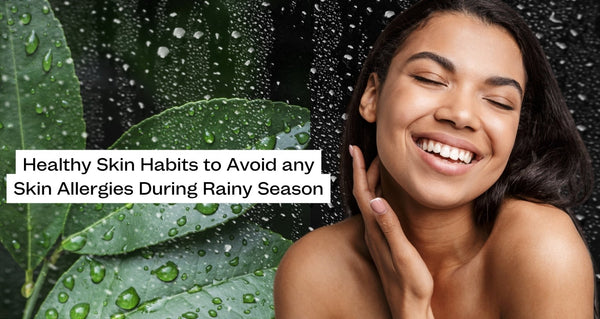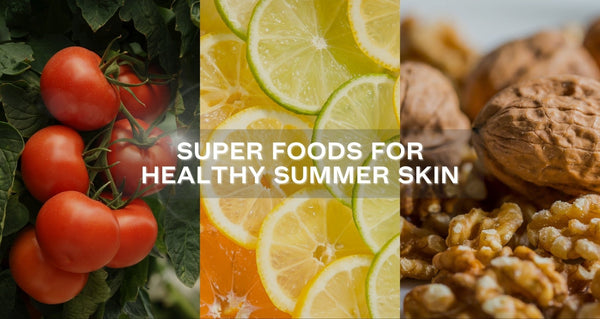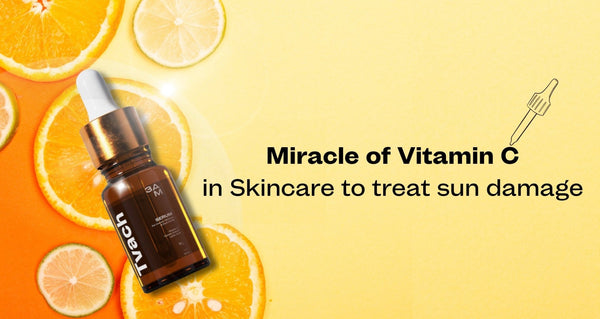AHA, BHA, PHA: Decoding the ABCs of Exfoliating Acids for Radiant Skin

Acids on the skin may sound like the beginning of a horrific story, but actually, skincare exfoliant acids have been used by professionals for a long time. We can use them in low doses on the skin as part of our skincare routine and experience their myriad benefits. They can help solve common skin problems like pigmentation, acne-prone skin, blackheads and more. AHA, BHA and PHAs are chemical exfoliants which help remove the dead skin cells from your skin and give you softer and smoother skin. There are several AHA, BHA, PHA benefits that we will discuss in this blog.
What are AHA BHA PHA
You can learn more about the exfoliating acids AHA BHA PHA full form, their benefits and more below. But first, let’s learn what is AHA, BHA and PHA.
- AHA: If you are wondering what is AHA, let us clear the air. AHA stands for Alpha Hydroxy Acids. These acids are helpful for acne-prone and oily skin. You may be already using products containing AHAs because they are commonly used in anti-ageing solutions and pigmentation creams. The various exfoliating acids that can be classified into AHAs are citric acid, glycolic acid, lactic acid, hydroxycaprylic acid and hydroxycapric acid, out of which the first two are the most powerful and popular AHAs that are mixed in a variety of skincare products.
- BHA: Beta Hydroxy Acids or BHAs treat skin problems, but their benefits and effects differ from those of AHAs. They are most likely used for blackheads, skin concerns associated with oily skin and ageing signs. Salicylic acid is the most popular BHA that is used widely in a number of skincare routines, especially for oily skin.
- PHA: Polyhydroxy acids are the least talked about, but are the most underrated exfoliating acids! They have an action similar to AHAs because they help remove dead skin cells from the top layer of the skin by breaking the substance that holds them together. The question “what is PHA” can be answered in one line: They are responsible for skin renewal without disturbing the deeper skin layers and with less irritation.
Benefits of AHA BHA PHA
Here are the AHA BHA serum benefits and PHA serum benefits that will help you in deciding which exfoliant should be a part of your skincare routine.
- AHA benefits: AHA helps prevent premature ageing signs like wrinkles, ageing spots and fine lines. They can remove pigmentation by eliminating the dead skin layer on your skin, which is why it may give a tingling sensation. Glycolic acid helps to regulate the synthesis of melanin, which is why it is used in brightening and depigmentation serums, while lactic acid is a natural moisturiser and helps prevent dryness.
- BHA benefits: BHAs are oil soluble, which is why they are used widely in skin products meant for oily skin. If you have always had skin issues, especially an oily T-zone, a BHA is the right choice for you. They avoid the cogging up of the skin by getting under the oily layer and exert antibacterial effects to prevent infection and acne. Salicylic acid helps get rid of the skin’s dull cells without removing any moisture from the skin.
- PHA benefits: The difference between AHAs and PHAs is that PHAs have a larger molecular structure, which is why they cannot enter deeper layers of the skin, but exert their action with minimal irritation to the deeper cells. They can be used by those who have sensitive skin and cannot handle other acids well. PHAs like gluconolactone, galactose and lactobionic work to decrease skin sensitivity, moisturise the skin and reduce ageing signs.
How Much Concentration Of AHA, BHA PHA Is Safe For The Skin?
AHAs help brighten the skin, but they also make it more sensitive to the sun and may cause irritation to some, which is why they should ideally be used at a concentration lower than 8%. BHAs are highly strong and may cause more sensitivity to the sun than AHAs, which is why they should be used carefully and in a concentration of 1-2%, especially for beginners. You should also prefer not to use it during the day. PHAs can be used at a concentration of 2-8% and if you have sensitive skin, you can start off by using it only twice a week.
How To Incorporate AHA BHA PHA For Skincare
Choose an exfoliating serum with AHA BHA PHA for your skincare routine. 3AM Serum for Exfoliation comes with a mild formulation. This exfoliating serum, contains 5% AHA, 2% BHA and 2% PHA for gentle care.
Our serum contains mandelic and glycolic acid (AHA), salicylic acid (BHA), gluconolactone (PHA) and raddish ferment. You can also check out our range of vegan face serums for various skin concerns.
Conclusion
Your question about what is AHA BHA and PHA may have been answered with the above information, as all these acids have different effects and have been used to treat a variety of skin concerns. Earlier, they were available only to professionals, but now everyone can reap their benefits in low concentrations in the form of serums and face cleansers. You can check out 3AM’s collection of face serums with AHA, BHA and PHA.
FAQs
Does AHA BHA improve skin tone?
Yes, although AHA is the main ingredient in improving skin tone, BHA also supports it and helps reduce pigmentation.
Does AHA BHA PHA remove dark spots?
Yes, these contain ingredients that regulate melanin synthesis and remove dead skin cells which reduces dark spots and makes your skin bright.
Is it OK to use AHA BHA PHA every day?
It is recommended to use chemical exfoliants no more than thrice a week, especially if you have sensitive skin.





